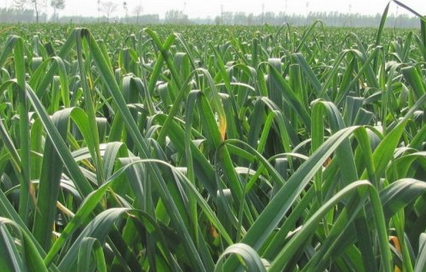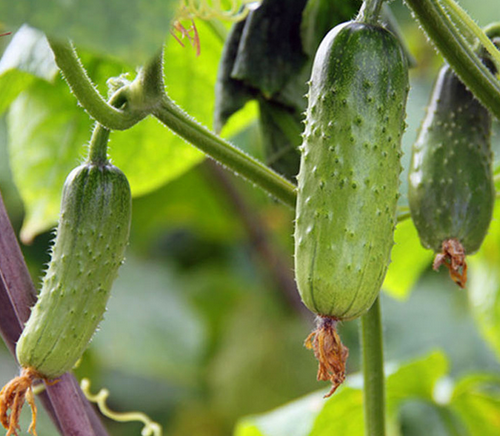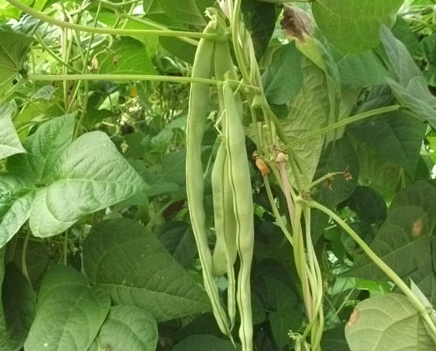High-efficiency intercropping mode of garlic, autumn cucumber and kidney bean
The pattern of garlic autumn cucumber bean bean intercropping refers to interplanting autumn cucumber between the garlic covered mulch and planting the beans after harvesting garlic. Using this model, the average yield per mus of garlic is 560 kg, the head of garlic is 620 kg, the autumn cucumber is 2850 kg, and the bean is 1600 kg, which is more than 30% higher than single or two. First, garlic 1, fine land preparation. Choose land with flat terrain, deep soil layer, soft plough layer, high soil fertility, rich organic matter, strong fertilizer and water retention capacity, 500 kg of fertilizer per mu, 40-50 kg of nitrogen fertilizer, 30-35 kg of phosphate fertilizer. Potassium fertilizer 40-45 kg, once applied to the base fertilizer. Then the soil is simmered, the height is 8-10 cm, the width of the face is 80 cm, and the width of the sulcus is 30 cm. 2, select good varieties, planting at the right time. The garlic should be in the range of 400-500 grams, too small garlic cloves should not be planted. The sowing date of garlic is suitable before and after the cold dew in early October. The density is 17 cm (5 rows per raft), the plant spacing is 7 cm, and an average of 33,000 plants per acre are planted. Ditching and sowing, the ditch depth is 10 cm, the planting depth is 6-7 cm, and the soil is covered with 3-4 cm thick after sowing. The water is covered with water and covered with a 90 cm wide mulch. 3. Field management. When the garlic emerges, it can be artificially broken, and the seedlings are exposed outside the membrane. After the light snow, pour the winter water. In the spring of the next year to the end of March, enter the period of sputum and valve differentiation, watering should be timely according to the sensation. In the middle stage of growth of garlic stalks, the tail-end, dew and other growth stages require a large amount of water, watering should be timely, and the field should be kept moist. The mulch was removed in time before and after the exposure. The shallow water was stopped 5 days before the picking, and the loose soil was gently ploughed to facilitate the picking. Immediately after picking, watering once, after 3-5 days, watering 1-2 times to promote the growth of garlic. When harvesting garlic, you should make a walk between the rows of garlic to prepare the autumn cucumber. Second, autumn cucumber 1. Sowing at the right time. Apply the organic fertilizer to the ditch when the garlic is about to be harvested, then mix well with the soil and flatten it. After harvesting the garlic, the cucumber seeds are spotted on the sputum, each line is 2 rows, the row spacing is 70 cm, and the hole spacing is 25 cm. 3 to 4 seeds per hole, 3,500 seedlings per acre, seeds should be soaked and disinfected with 0.1% trisodium phosphate solution. 2. Field management. When there are 3 to 4 true leaves in the melon seedlings, 1 seedling is kept in each hole and the seedlings are fixed. After the seedlings, the shallow cultivating was carried out once, and 10 kg of ammonium sulfate was applied per acre to promote early seedling growth. After the seedlings are watered, they are inserted into the frame, and the adjacent 2 rows of the sulcus are tied into a "human" frame. The vines are combined with the vines for pruning, and the main vines are topped in time. 3. Disease prevention and treatment. Autumn cucumber diseases mainly include downy mildew, anthracnose, powdery mildew, blight, and angular spot disease. It can be controlled by 2% metalaxyl 500 times solution, 50% virgin manganese zinc 600 times solution, 75% chlorothalonil 600 times solution, 64% antivirus 矾 400 times solution, 77% can kill 500 times liquid and other fungicides. Third, beans 1. Sowing at the right time. In late June, the ridges were broadcast live between the rows of cucumbers, with a line spacing of 30 cm and a hole spacing of 20 cm. Each seed was 2-3 seeds. 2. Field management. After the seedlings are planted, the water is poured once, and then the racks are inserted to prevent the vines from intertwining each other, affecting flowering and pod formation. During the pod-forming period, it is necessary to topdress 2-3 times, and apply 15 kg of ammonium sulfate per acre. Combined with spraying to control pests and diseases, add appropriate amount of micro-fertilizer, potassium dihydrogen phosphate, etc., and carry out foliar topdressing. 3. Disease prevention and treatment. The main diseases are root rot, rust, anthracnose, and leaf burn. The rust is treated with 20% rusting emulsifiable concentrate 2000 times solution or 65% mancozeb 500 times solution; the root rot is mixed with 40% pentacene nitrobenzene powder and 50% thiram, in a ratio of 1:1. Use this mixture of 1.5-2 kg of fine soil and 25 kg of fine soil to be sprinkled into the wet seed hole; the leaf burnt disease is sprayed with 10 million units of agricultural streptomycin and 0.1% calcium chloride solution or garlic 8000 times solution; It can be controlled by 80% anthrax Fami 600 times solution or 70% methyl thiophanate 800 times solution. 4. Timely harvesting. In order to facilitate the cultivation of garlic in the vine, it should be harvested at the end of September. Eas Self Alarm Tag,Alarm Rf Tag,Anti Theft Security Tags,Tag Alarm Group ZHEJIANG BOSHINE ELECTRONIC SECURITY CO.,LTD , https://www.boshine.com


